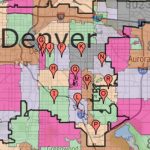5th Grade Newsletter



Dear 5th grade families,
Welcome to the weekly 5th Grade Newsletter! Each week we’ll list Action Items at the top, Important Dates second, and information about what we’re learning in each classroom third.
As always, we are grateful for your support and communication. Please reach out to us with questions, concerns or ideas!! - Val, Jen and Duffy
Duffy katherine_duffy@dpsk12.net
Action Items:
Candy:
- Please don’t send candy to school. Students are eating it all the time and sharing. We have attached a picture of one particular candy that many children are continuing to bring to school. While we aren’t following the COVID protocols of the past years, we certainly don’t want kids sharing candy they have to lick off of their hands. It’s a guaranteed way to have outbreaks in the 5th grade. Thank you so much for your help.
- Please talk to your child about not sharing food. We have severe allergies in this grade and students continue to share food.
- Please take some time to give us some feedback. We want to make sure your voice is heard and that we are continually improving your child’s educational experience.
https://docs.google.com/forms/d/1HbsZx62O5ISVQngPB9CZu8c04Kb-ZNjbdBnF1SnjQ1c/edit
- Reach out to Val if you are a scientist and would like to share your knowledge with the 5th graders. Specifically, we are focused on chemistry, matter, elements, mixtures, substances, nanoscale, etc.
Important Dates:
Conferences: Student/Parent/Teacher conferences are Friday, October 14, from 7:30 a.m. to 3:30 p.m. and Monday, October 17th from 10:30 - 6:30 p.m. Sign up here!
Monday October 10th- Friday 17th - Scholastic Book Fair
Thursday, October 13th - Picture Make-up day - absent students only
Friday, October 21st - Fall Field Day
Thursday October 27th - 5th Grade Literacy Performance @ 6:15pm - 7:15pm
December 8-9 - Overnight Outdoor Education (More info to come.) Mark your calendars.
January 31 - Young Ameritowne Field Trip (More info to come.) Mark your calendars. (This is a date change due to transportation issues.)
Balarat
We are going to Balarat Outdoor Education on December 8-9. More information to come, but we wanted you to know that Balarat opened up their merchandise store for a limited time. Here is the information if you would like to buy some swag that also supports the program!
“The Balarat Team is very excited to announce that we are opening an online web store for Balarat merchandise! Short sleeve t-shirts, as well as hood and crewneck sweatshirts are available for purchase in both youth and adult sizes. The web store will only be open for a LIMITED TIME! The store is open through October 28th at 11:59 pm MST. After the store closes, it will take about 2-3 weeks for production and delivery.
Both the link and QR Code below will take you to the web store where you can place your orders:https://stores.labseven.co/BOE/shop/home
From the Classrooms:
ELA: What a Spooky week it’s been in ELA planning and drafting our stories for the Annual Izzi B Spooky Story contest. This is our last writing piece for our narrative unit in Writers Workshop. When you come in for conference take a look at some of the writing we have been working on so far this year.
We have two chapters of our book left and will begin to start our end of unit project next week. We will be having our student work showcase October 27, 2022 at 6:15 in your child's homeroom. Please reach out now if you know your child will be out of town so we can prepare by filming their presentation.
Science:
We began our new unit this week! Modeling Matter: The Chemistry of Food
Most people’s greatest exposure to physical and chemical changes—at least those changes that are easily discernible—is through food and cooking. Like most everything else, foods are comprised mostly of mixtures, and the kitchen is the locale where we separate, dissolve, cool, heat, whip, emulsify, and further transform foods for some desired outcome. Food scientists work to ensure that the food we eat is safe, affordable, tasty, and convenient. In this unit, students take on the role of food scientists working in a lab for a large food-production company. They engage in two investigations, one to identify a potentially hazardous food dye in a mixture, and the other to create a good-tasting and visually appealing salad dressing that does not separate into layers and contains no sediment. Both investigations offer the opportunity for students to delve deeply into understanding the particulate nature of matter and to apply it to explain phenomena at the macroscale (the observable scale). Students engage in hands-on experiences in which they observe phenomena and then use two apps to investigate those phenomena at the nanoscale (the molecular level)—the Modeling Matter Diagramming Tool, which enables students to create models of what they think might be happening at the nanoscale; and the Modeling Matter Simulation, a dynamic model that enables students to explore what happens when different kinds of particles are mixed, to make and test their predictions, and to gather evidence to support their emerging understanding. By the end of the unit, students will understand that there is a connection between the observable properties of materials and the properties of the molecules of which those materials are composed. Students will also be able to explain a variety of things that can happen when two substances are mixed, at both the observable scale and the nanoscale.
Math:
This week we started Unit 2, adding and subtracting fractions with unlike denominators. We learned two different models, the money model and the clock model. Don’t worry, we will learn the way parents learned it, too. The money and clock models help students visualize fractions in a concrete way and it helps them build understanding about how to find common denominators. With the money model, we can find common denominators for the factors of 100: halves, quarters, fifths, tenths, twentieths. For example:
½ = 50/100
¼ = 25/100
1/10 = 10/100
1/20 = 5/100
⅕ = 20/100
Working with hundredths is a bit large, but it helps kids to connect to something concrete like quarters, dimes, nickels, and pennies.
Likewise, the clock model helps us with factors of 60: halves, thirds, quarters, fifths, sixths, tenths, and twelfths. So:
½ = 2/4, 3/6, 6/12, and 30/60
⅓ = 4/12, 20/60
¼ = 3/12, 15/60
⅙ = 2/12, 10/60
1/12 = 5/60
The clock is something that hangs in our classroom and students can use as a reference for finding common denominators.
Homework answer sheets for this week:
Please reach out with any questions!




.png)

